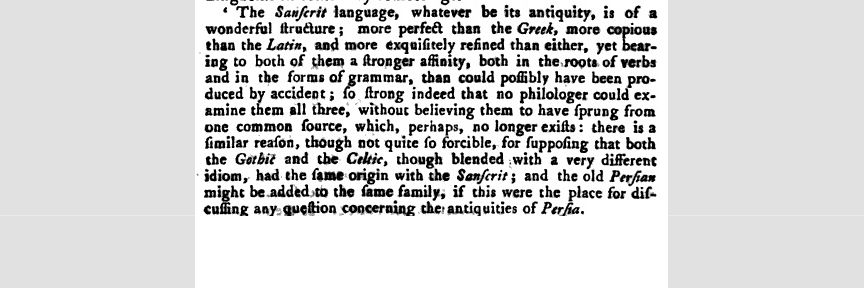If you ever take a History of the English Language course, you will encounter this quote early on. William Jones, a British judge serving in Bengal in the 1700s, noticed features of Sanskrit that showed similarity of both vocabulary and structure to Greek and Latin, and thus eventually the European languages. He was not the first, as similarities had been noticed occasionally as much as two centuries earlier, including noticing that the Roma (gypsy) language(s) had similarities to Sanskrit. But Jones was a linguist, was more precise in his observations, and got the word out there that there simply must be an underlying connection. This was possible because all educated men took Greek and Latin, and there was enough of a British presence in India that there was a presence of Indian languages in England.
What he was noticing was the Indo-European language family and what he was predicting could be discovered was Proto-Indo-European. It is not an overstatement to say that modern historiacal linguistics dates from this observation.

No comments:
Post a Comment